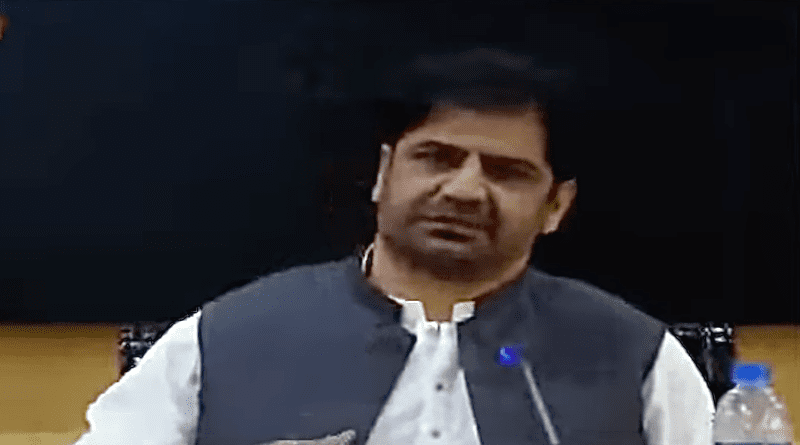Gulzar Imam’s Surrender And Mainstreaming Anarchists – OpEd
The capture of Gulzar Imam Shambay, the leader of the Balochistan National Army (BNA), has again brought attention to Balochistan. He started as a Balochistan Students Organization (BSO) activist. However, he fell under the influence of anti-state elements and eventually became the leader of an insurgent organization with more than 300 terrorists. The state’s intelligence services successfully broke into the rebels’ network and drew their commander away from the protection of his haven, leading to his arrest. Undoubtedly, the dissolution of the network and its commander would provide a wealth of data leading to further clues on the insurgency’s sponsor network, supply chain, and financial trail. However, rather than just cutting the insurgency’s leaves, it is more crucial to concentrate on its fundamental causes in order to deprive it of resources.
If another vicious version of Gulzar Shambay replaces him, the capture would be of short-term value. The pearl of great worth that has to be pursued in every discussion of Balochistan’s counterinsurgency strategy is how to avoid that. Shambay’s BNA was formed when he came out of the shadow of Brahamdagh Bugti’s Balochistan Republican Army (BRA) to form part of an umbrella organization Baloch Raaji Aajoi Sangar (BRAS), that yoked a motley group of separatist organizations like Lashkar e Balochistan (LeB), Baloch Republican Guard (BRG), United Baloch Army (UBA), Balochistan Republican Army (BRA), Balochistan Liberation Front (BLF), and Balochistan Liberation Army (BLA) together in 2018.
Although the operational orientations of the aforementioned separatist organizations vary, they nonetheless share the same strategic goal of ethno nationalism secession. The BLA, which Balach Marri headed until his murder in 2007, is now headed by Harbiyar Marri, who is staying in London. Between 500 and 700 militants work for the organization, which operates in Karachi, Khuzdar, Kalat, Nushki, Kohlu, Bolan, and Quetta. However, the group is divided between the Harbiyar faction and the Majeed Brigade, which is commanded by Bashir Zeb, a commoner in the tribal hierarchy of Balochistan. Brahamdagh Bugti, the leader of BRA, broke away from his uncle Talal Bugti’s Jamhoori Watan Party (JWP) in 2008 and is now operating out of Vienna. In January 2022, Gulzar Imam Shambay, a Brahamdagh constable, merged the United Baloch Army of Mehran Baloch with BRA to establish his own organization, the Baloch National Alliance (BNA). After Europe-based Brahamdagh Bugti was cast aside, he was the primary player leading over 300 militants in Nushki, Kech, and Khuzdar.
Dr. Allah Nazar is the leader of the BLF, which focuses on the Makran and Turbat coastal areas. Javed Mengal is the leader of Lashkar e Balochistan, while Commander Nisar, Karim Marri, and Hamal are in charge of another BLA breakaway organization formerly commanded by Aslam Achu until his death in 2018. Attacks by militants totaling 51 in 2019 and 81 in 2022 are projected to reduce in severity only when the intelligence and security services have successfully retaliated. The decision to attack the head of the BNA came after a painstakingly planned intelligence operation in which the first leadership hierarchy leads were discovered using resident agents within the militant group. Modern digital technologies were used to confirm the leads, and it was discovered that the BNA leadership had connections to adversarial intelligence services like RAW.
Following the validation of the leads, a luring-in operation that posed serious dangers to the lives of daring intelligence agents was conducted. The effective dismantling of the network is evidence of the intelligence services’ skill and tenacity and a significant blow to militancy. However, it must be followed by a plan to deprive the insurgency of the oxygen it requires to survive. The ineffective government, slack law enforcement, and economic inequality are that oxygen. The gradual tectonic shift in the socioeconomic and demographic makeup of the province is already reflected in the change in the nature of the insurgency. The rapid urbanization of the province, including cities like Nushki, Khuzdar, Turbat, Panjgur, Zhob, and Quetta, impacts the population shift.
The increase of an educated urban population that is politically active and dissatisfied owing to a lack of development and employment possibilities indicates social transformation. Because of poor leadership and economic unfairness, the younger generation is irate and disappointed. The enemy intelligence services that want to keep the province unstable may easily use this youthful and disenfranchised population. Balochistan’s peace and stability have a geopolitical component. With CPEC standing out like a sore thumb to the sensitivities of competitive power politics, it is in the crosshairs of the global power struggle. The intelligence services must target the foreign financing of these insurgencies with the same effectiveness that they captured Gulzar Imam. To halt the flow of financing to rebels, local smuggling, drug trafficking, and extortion must also be addressed via improved law enforcement.
Balochistan’s vast geography makes it ideal for hit-and-run insurgencies; thus, maintaining a low-intensity insurgency is not a significant challenge. It is more crucial that the insurgency not gain enough ground to undermine the province’s stability. It should be underlined that although those separatists protesting for rights need to be engaged, those who have made a Faustian pact with the devil and are playing into the hands of enemy intelligence services need to be dealt with with the full might of the state.
Finally, to gain the populace’s support, all progress, including CPEC, has to be linked to the well-being of the people in the province. The province’s strongest defense against insurgency would be that.

